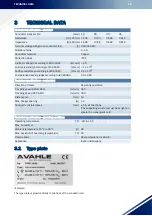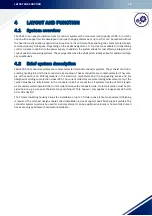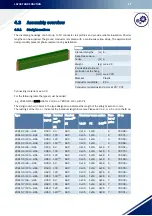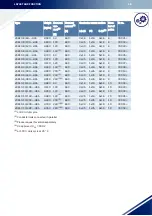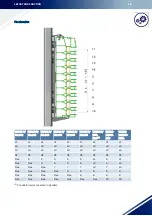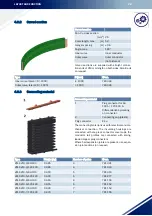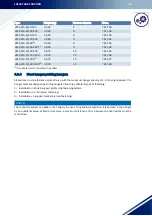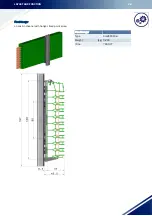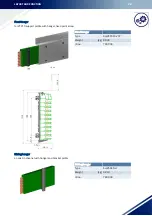
SAFETY INSTRUCTIONS
8
2.3
General risks
The following section describes residual risks that arise even if the device is used as intended. Observe the
safety instructions listed here in the other sections of these instructions to reduce the risk of injuries or dam-
age to property and equipment and to avoid dangerous situations.
Do not change or modify the system inappropriately!
WARNING!
Risk of death from improper replacement or removal!
Errors during the removal or replacement of components may cause life-threatening
situations or significant property damage
►
Observe the safety instructions before beginning any removal work.
2.3.1
Danger from electrical energy
Perform the following safety work according to VDE 0105-100 (this work must be carried out by a qualified elec-
trician, see chapter: "2 security").
Activate
The required separation distances must be established.
Secure against restart
During work, a prohibition sign must be attached reliably on switching handles or drives of switches, control
units, pressure and sensing devices, safety parts, circuity breakers that have been used to unlock a system
part or that can be used to connect electricity. If this is not possible, then the clearly associated prohibition
sign must be nearby. Existing mechanical interlocking devices against restart must be used for manually op-
erated switches.
Determine absence of voltage
Absence of voltage is to be determined at or as close as possible to the work site at all poles. Absence of volt-
age must be checked with a voltage tester immediately before and after use.
Grounding and short-circuiting
Parts on which work will be performed at the work place must first be grounded and then short circuited.
Grounding and short-circuiting must be visible from the workplace. Deviating from the above, it is permitted to
ground and short-circuit near the work place if this is required due to local conditions or for safety reasons.
Devices for grounding and short-circuiting must always first be connected with the grounding system or the
ground electrode and afterwards with the parts to be grounded. Grounding and short circuiting may be waived
in certain low-voltage systems (see VDE 0100-100).
Cover adjacent, live parts or isolate them
Before starting work, check whether it is appropriate to make adjacent parts voltage-free.
Summary of Contents for VKS10
Page 89: ...MAINTENANCE 87 Connecting caps mast assembly before Connecting caps mast assembly after ...
Page 96: ...PROTECTIVE MEASURES 94 10 PROTECTIVE MEASURES 10 1 EU conformity declaration ...
Page 99: ...CE Technical Documentation DQS certified in accordance DIN EN ISO 9001 2015 OHSAS 18001 2007 ...

















